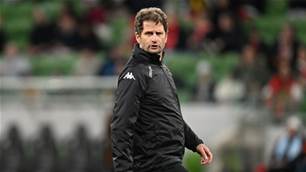Professional Footballers Australia (PFA) believe their Grassroots to Greatness Roadmap will generate success and depth for the Matildas.
PFA CEO John Didulica and former Matildas Kathryn Gill and Melissa Barbieri unveiled their plan on Tuesday to help women’s football in Australia stand on its own feet.
The plan reveals that 85% of W-League players currently earn less than $5000, and that 90% would consider leaving the game early to find a more financially rewarding career.
The PFA’s vision includes working with the FFA to improve the women's game, domestically and internationally, providing better pay and professional environments.
Among the key recommendations:
- The ‘60 @ 60’ strategy - a collective bargaining agreement to provide the top 60 players in the league a minimum of $60,000 a year;
- A PFA-developed National Women’s Football Network to fund flexible employment for players within the football industry;
- FFA to distribute at least $175,000 a year to cover W-League player payments with clubs to generate $385,000 annually from aligned programs and properties; and
- Appointment of an advocate to promote greater distribution of revenues for teams and players participating in the FIFA Women’s World Cup.
“From what we outlined in the presentation were two key components, the first of those was an increase dividend from FFA, so that’s fundamental to this,” Didulica said.
“FFA need to increase their current distribution from $50,000 per annum to $175,000 per annum.
“The broadcast deal is the obvious one for us. The W-League as a broadcast property was incorporated into the new TV deal struck with Fox and as a consequence we think the dividend should flow from that into the W-League program.”
Didulica, formerly with Melbourne City as Director of Football, said the vision first crystallised when he was running the women’s team program and noticed the professionalism and sacrifices female players were making to earn a living in football.
Much of the talk coming out of Melbourne in the past month was the threat coming from the AFL, whose inaugural women’s season recently began with free entry to matches.
Football has the highest participation rate in Australia and despite being mindful of other sports, the bigger picture was competing with other nations and developing players to the point where there is strength and depth in the Matildas.

The W-League is the lowest paid women's football league when compared to the United States, England, France, Germany and Sweden and has the lowest minimum remuneration of any Australian professional sport.
The goal of the plan is to provide the national team with as many world class players as possible, doubling the current pool from 25 to 50 with the aim if winning gold in the 2020 Olympics and taking out the 2023 World Cup.
“The quality of football is generally high, they’ve got great vision, mobility and are wonderful athletes,” Didulica said.
“If we allow these players to get to 17, 18 or 19 (years-of-age) and not have an effective career ahead of them we do risk losing them to other sports, so our challenge is twofold.
“First, to convince them to fall in love with the game, make it their calling. Second, to set ourselves up to take on the real competitors who are the USA, Sweden, Germany, France. They’re the people we’re up against in football, it’s not the AFL or Big Bash.
“It’s other nations who want to take away our Olympic gold medal or World Cup trophy.”
Didulica also said it was critical for some of the fundamental components of the plan to be implemented as early as next season.
“I think for us the minimum salary is a must in order for us to comply with the laws of the land,” he said.
“There needs to be increase investment in some of the core components of the performance model around medical, human performance and football performance.
“This is a discussion for a collaboration with FFA and the clubs, we need to make sure we know exactly where they’re coming from and what capacity they have as organisations.”
Related Articles

'Timing not right': Montemurro's verdict on Matildas vacancy

Matildas: 'Fourth at the Olympics is honestly the worst place you could come'
.jpg&h=172&w=306&c=1&s=1)













